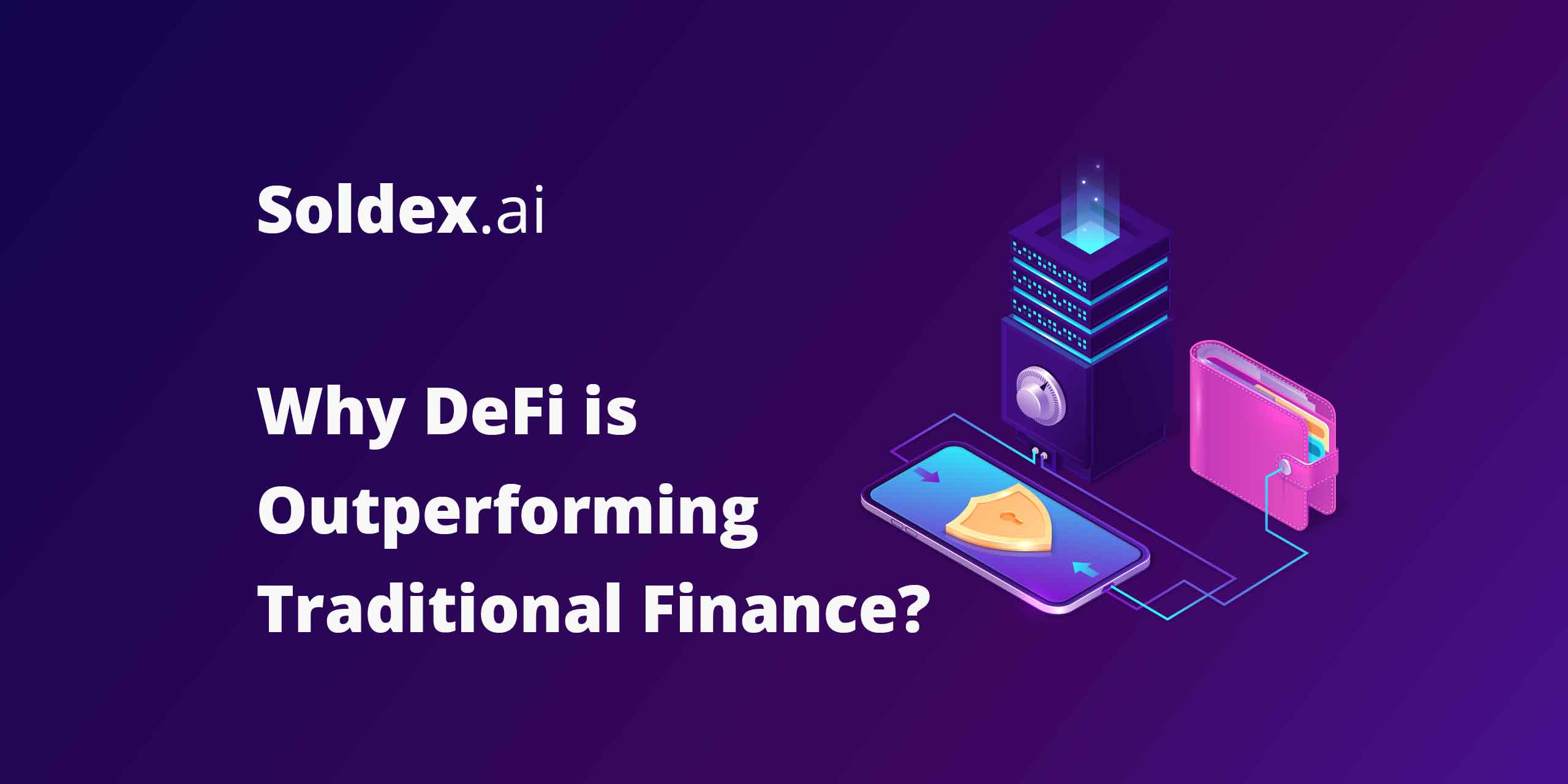
Why DeFi is Outperforming Traditional Finance
Technologies keep on developing. The birth of several blockchain technologies influenced how people perceive the concept of crypto. If yesterday, someone who knows crypto can only imagine a digital coin being traded or spent on products, users and investors today are capable of understanding how blockchain is different from conventional technologies and computer systems. Thanks to the internet, a lot of information is available to people.
Let’s use finance as an example. There are regulations, standards, and requirements coming from the central bank or other financial institutions in traditional finance. Interests are controlled by the authorities, as the case has always been. In decentralized finance, on the other hand, the system is different. No one acts as an intermediary between the lender and the borrower. No one controls the interest except the market, which is a community of lenders and borrowers.
There’s more into decentralized finance (DeFi) if you dig deeper. To help you understand more why this new technology is overpowering traditional finance, here’s some information we’ve summed up for you.
DeFi vs. Traditional Finance
Infrastructure
Both DeFi and Traditional Finance have an infrastructure. And, they differ in this aspect a lot. Traditional finance has ATMs, Branches, Mobile Apps, Customer Relationship Management Systems, Notifications, Contract, Data Warehouse, Analytics, and Data Lake. Those tools pretty much sum up how traditional finance works.
In traditional finance, the system functions like this: The borrower lends money from the bank and pays the interest offered by it. Interests may differ depending on many factors, such as the credibility of the borrower, credit scores, credit histories, ability to pay, amount of the loan, and other things that will tell whether a person is a good borrower or not. If he’s a good one, he gets low and reasonable interest. If he isn’t, banks and financial institutions set higher rates. There’s always someone in control. Traditional finance is regulated by the central bank.
DeFi, on the other hand, has front ends, wallets, oracles, analytics, and block explorers. You might think that these are all technical terms that only experts would understand. Well, there’s a simpler way to explain how decentralized finance works.
Unlike traditional finance, there are no ATMs and bank branches in DeFi. There’s only a blockchain technology or protocol that serves as the foundation of the system. No one is in control, which is one reason why transactions are more reliable and convenient to perform. Since the blockchain is a decentralized system and most DeFi projects are built on it, the same system governs. So, when you borrow cryptos and other digital assets, for example, the interest rate you need to pay is determined by the supply and demand in the market. Your credit history doesn’t matter. DeFi firms don’t ask for your credit scores. There’s so much flexibility on it.
Application Layer
Now, let’s compare traditional finance and DeFi in terms of application layer or the products they offer to the market. Traditional finance has deposits, lending, mortgage, remittance, trade finance, card issuance, treasury, investments, payments, insurance, wealth management, and capital markets. Meanwhile, DeFi has lending, decentralized exchanges, indexes, stablecoins, yield, vaults, options, insurance, synthetic assets, and launchpads.
Yes, both finance systems are entirely different from each other as the former is centralized and the latter isn’t. The application layer of DeFi is more advanced as smart contracts are used to automate the whole process. Unlike traditional finance, where the process takes a long time because of manual approval, DeFi saves the time of the parties involved.
System
Traditional finance has transaction processing and a core banking system. This system is divided into four: ledger, accounting, risk management, and security. All of these work separately, and more often than not, one process is not executed until the first one is completed. For example, without a ledger, accounting is not performed.
Decentralized finance has node infrastructure and the blockchain where ledger, accounting, and transactions are executed efficiently. So, what’s the difference? Because of the decentralized system of the blockchain, the process is faster. The blockchain can hold and support billions of transactions simultaneously without lagging. Thanks to multiple computer networks spread out across different continents. Traditional finance companies can only do what their system can support, and so far, none has ever beaten the blockchain.
DeFi has the best advantages
Overall, DeFi is beating traditional finance in terms of infrastructure, application layer, and system. The best advantages of decentralized finance are efficiency, automation, and decentralization. Why sign contracts with your pen when you can automatically execute a smart contract with pre-coded terms and conditions? Why use an intermediary when there’s a way you can directly transact with another person without giving your personal details? DeFi provides more benefits than you can imagine. And if you haven’t explored it yet, this is the best time to check out the latest offers so you can save yourself from the expensiveness of a centralized system.


